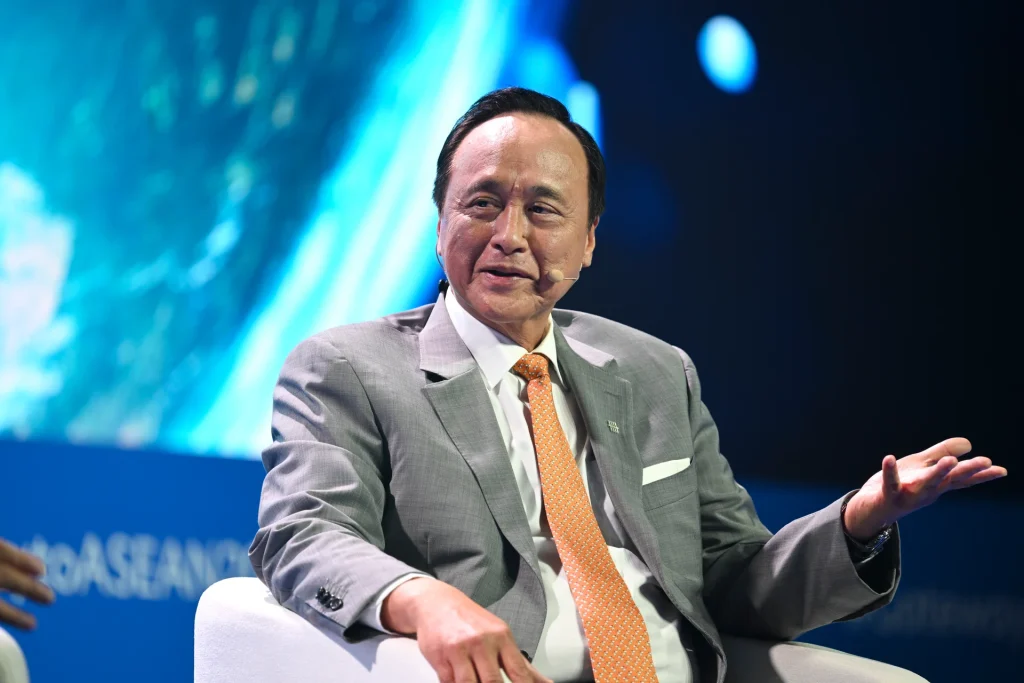A paper by the bank says Asean can benefit from worldwide shifts in near-shoring and investment, though intra-region challenges remain
[SINGAPORE] Rapid shifts in global supply chains may make Asean businesses the beneficiary of increasing investment and regionally focused market strategies, UOB has said in a new insights paper.
The paper, titled “Gateway to Asean” and published on Thursday (Oct 16), said that within the next three years, 52 per cent of global companies will consider near-shoring or reshoring their business operations, that is, siting these operations nearer their markets.
In addition, 45 per cent of businesses targeting investments in Asean countries intend to deepen their regional supply-chain capabilities.
The bank noted: “Asean is no longer just a manufacturing destination; it is increasingly seen as a critical in-region hub for storage, fulfilment and distribution.”
The bank’s paper, launched at this year’s edition of UOB’s annual “Gateway to Asean” conference, drew its insights from Bloomberg’s 2025 Foreign Direct Investment Outlook.
The ongoing shifts in global supply chains, which the paper described as a “once-in-a-generation” reset, come on the back of rising trade barriers, a US-China trade war and increased expectations of supply-chain efficiency, said the bank’s head of group wholesale banking and global markets, Frederick Chin.
A NEWSLETTER FOR YOU

Friday, 8.30 am
Asean Business
Business insights centering on South-east Asia’s fast-growing economies.
The paper noted that near-shoring trends first emerged as a reaction to the pandemic-driven disruption of global supply chains, but have now become an active business choice as companies chase greater continuity and traceability.
For example, Thailand and Malaysia have become popular destinations for companies looking to set up operations in the Asia-Pacific. About 20 per cent of investors in Thailand and 18 per cent of investors in Malaysia are considering setting up regional headquarters in these countries.
The paper said: “This shift suggests that businesses are now prioritising proximity over production, cost efficiency and on-the-ground agility when deciding where to base (their) regional leadership.”
UOB’s chief executive Wee Ee Cheong noted in his opening address at the conference that foreign direct investment inflows to the Asean-6 economies are expected to reach US$370 billion (S$479.2 billion) by 2030. In 2024, the figure was US$225 billion.
Regional economic hubs like Thailand’s Eastern Economic Corridor and the Johor-Singapore Special Economic Zone (SEZ) have drawn significant investor interest, he said. He noted that since 2024, UOB has facilitated S$3.3 billion in investments in the SEZ.
Asean has drawn investments as a manufacturing destination in the past, but is likely to emerge as a storage, fulfilment and distribution powerhouse, Wee said.
“Electronics and electric vehicle makers are concentrating in Thailand, and Malaysia is becoming the centre for semiconductor assembly, testing and packaging,” he said.
The paper bolstered his point: “Despite Asean’s historical appeal for low-cost manufacturing, advanced technology – including artificial intelligence, the Internet of Things and robotics – is now the No.1 focus among businesses, considering investments in the region.”
Chin, the bank’s head of group wholesale banking and global markets, speaking in a fireside chat at the conference, observed that China’s deep advanced-technology manufacturing base is likely to prove a crucial partner for Asean in these endeavours. He pointed out that the Asean-China relationship, historically driven by the manufacturing sector, must be forged as a complementary partnership.
For instance, China’s production of stainless steel and electric vehicles – activities which use nickel as a key raw material – have led to the country investing heavily in Indonesia’s nickel industry.
Chin had this piece of advice for businesses in the region: “Start thinking how to bring the best of China to Asean.” He added that Asean’s market access and distribution capabilities can be exchanged for China’s supremacy in tech manufacturing.
He said much of Asean’s growth trajectory will be driven by the intra-Asean and Asean-China trade, currently valued at US$1.5 trillion.
Cynthia Xin, who heads UOB’s wholesale banking, said in the paper: “More leading businesses with sophisticated operations are using the China-Asean corridor to expand market reach, optimise production capabilities and strengthen supply-chain resilience.”
Chin pointed out, however, that the region will have to overcome the challenge of harmonising policy directions to create a pro-business environment.
He noted that under a third of Asean’s US$3.7 trillion gross domestic product comes from trade within the region, where non-tariff trade barriers and regulatory differences continue to hamper growth.
“Governments have to play a pivotal role to help businesses and attract foreign investment,” he said.


